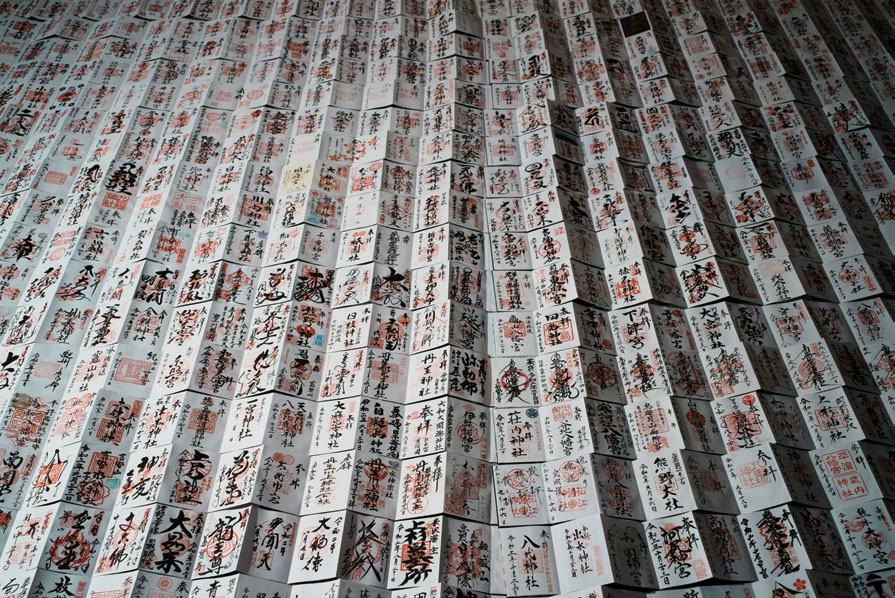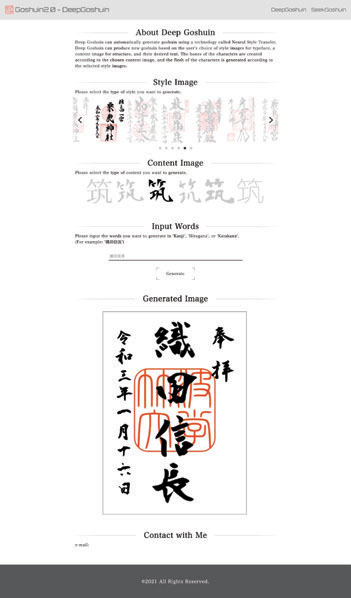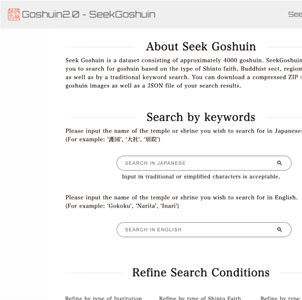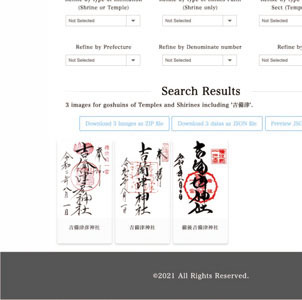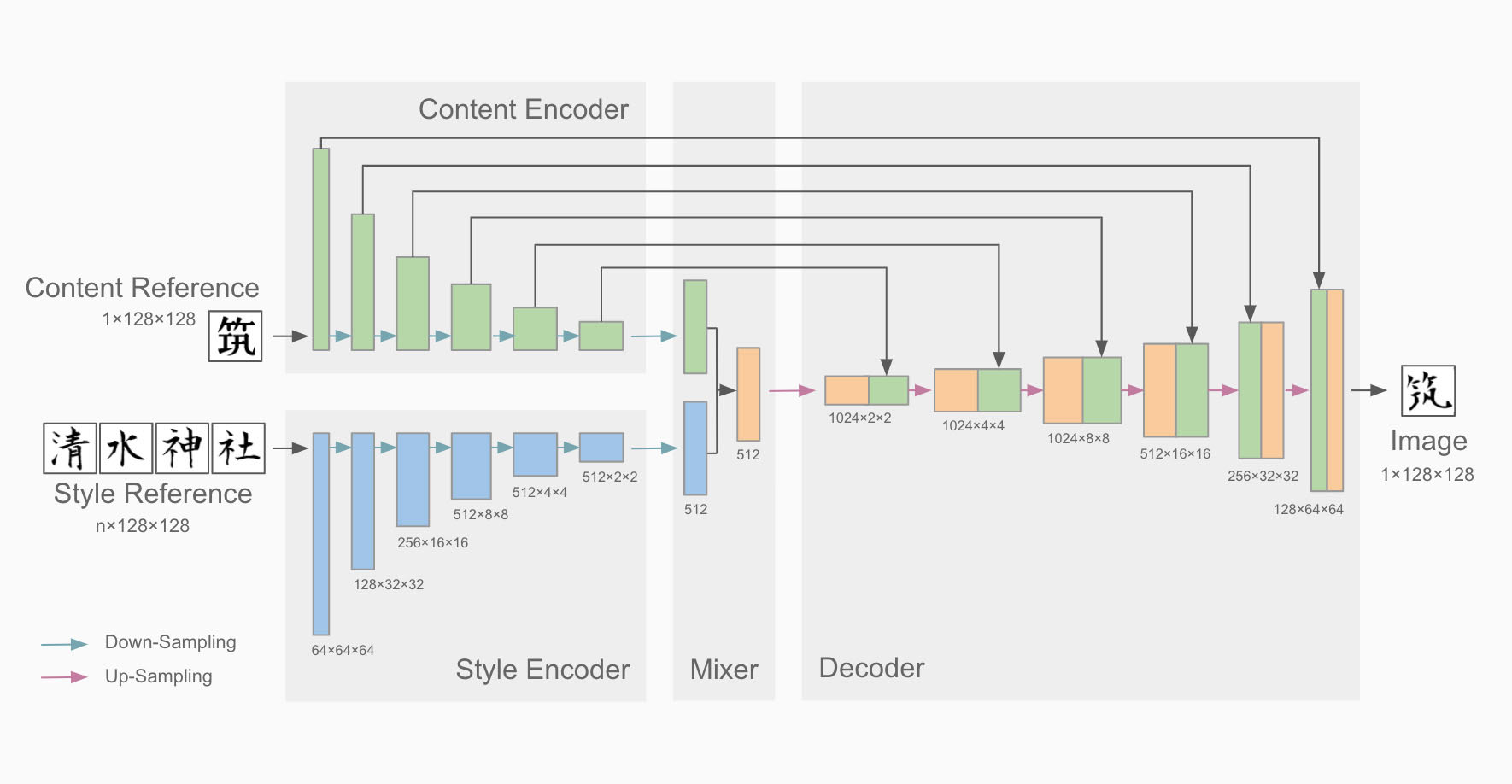“Goshuin 2.0: Construction of theWorld’s Largest Goshuin Dataset and Automatic Generation System of Goshuin with Neural Style Transfer” by Shimizu, Minagawa, Morris, Meza and Ochiai
Conference:
Type(s):
Entry Number: 27
Title:
- Goshuin 2.0: Construction of theWorld’s Largest Goshuin Dataset and Automatic Generation System of Goshuin with Neural Style Transfer
Presenter(s)/Author(s):
Abstract:
Goshuin (御朱印) are items that can be collected from shrines and temples in Japan as evidence of one’s visit and worship. They consist of a red stamp, or seal, and calligraphy. They have been in circulation mainly in Japan since the Middle Ages, and in recent years, the artistic quality of the goshuin has appreciated and attracted considerable attention with the development of social networking sites.
Outside Japan, there are items similar to goshuin: Christianity issued stamps to pilgrimages at holy sites across the globe, with the most notable example being the Caminode Santiago de Compostela in Spain [de Navarra 2007]. Furthermore, from the 12th century, pilgrimage scrolls depicting maps and calligraphy were used to commemorate the Hajj, which is the Islamic peregrination to Mecca [of Islamic Art et al. 1997].
The aim of this study is to explore possibilities of utilizing goshuin data. We will clarify the current issues related to goshuin and propose solutions using goshuin data utilization. The following are some of the problems related to goshuin: 1) There are no datasets that include the available goshuin, and the relevant books and websites are difficult to use even for research purposes due to copyright issues: 2) As goshuin are an intangible culture, it may suddenly disappear: 3) Goshuin are not well known outside Japan, and there are no technical research examples related to goshuin: 4) Demand for goshuin is increasing owing to the current increase in their popularity. Simultaneously, supply is decreasing due to Japan’s aging workforce. As the number of people who can write goshuin is decreasing, shrines may stop providing goshuin.
We have proposed two approaches to solve these problems in this study. The first approach involves constructing the world’s largest goshuin dataset. The second approach is to build an automatic goshuin generation system using neural style transfer. This system can freely create goshuin by applying an existing goshuin typeface to characters input by the user. In summary, we consider the possibilities of utilizing goshuin data to create a dataset and use it to generate more goshuin.
Keyword(s):
Acknowledgements:
We are grateful to Mr. Akihiro Tamada who sent us his paper on DeepGlyph and the generated model he developed, and DIAMOND, Inc. who provided images of goshuin for the dataset.

